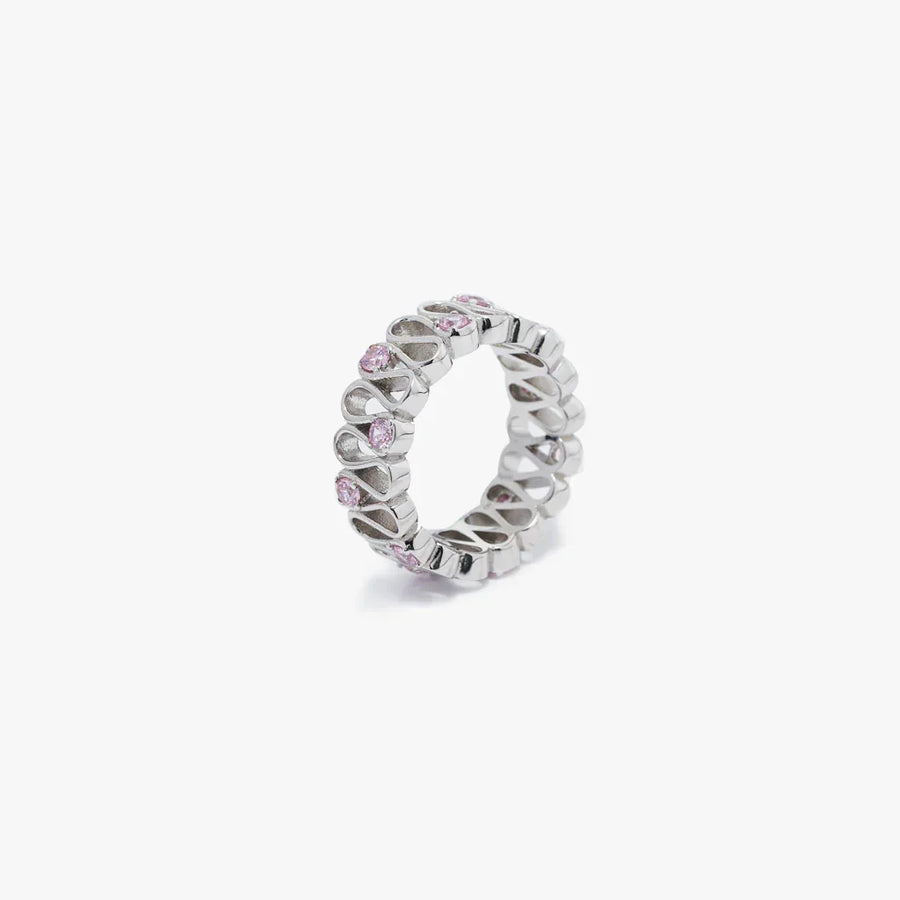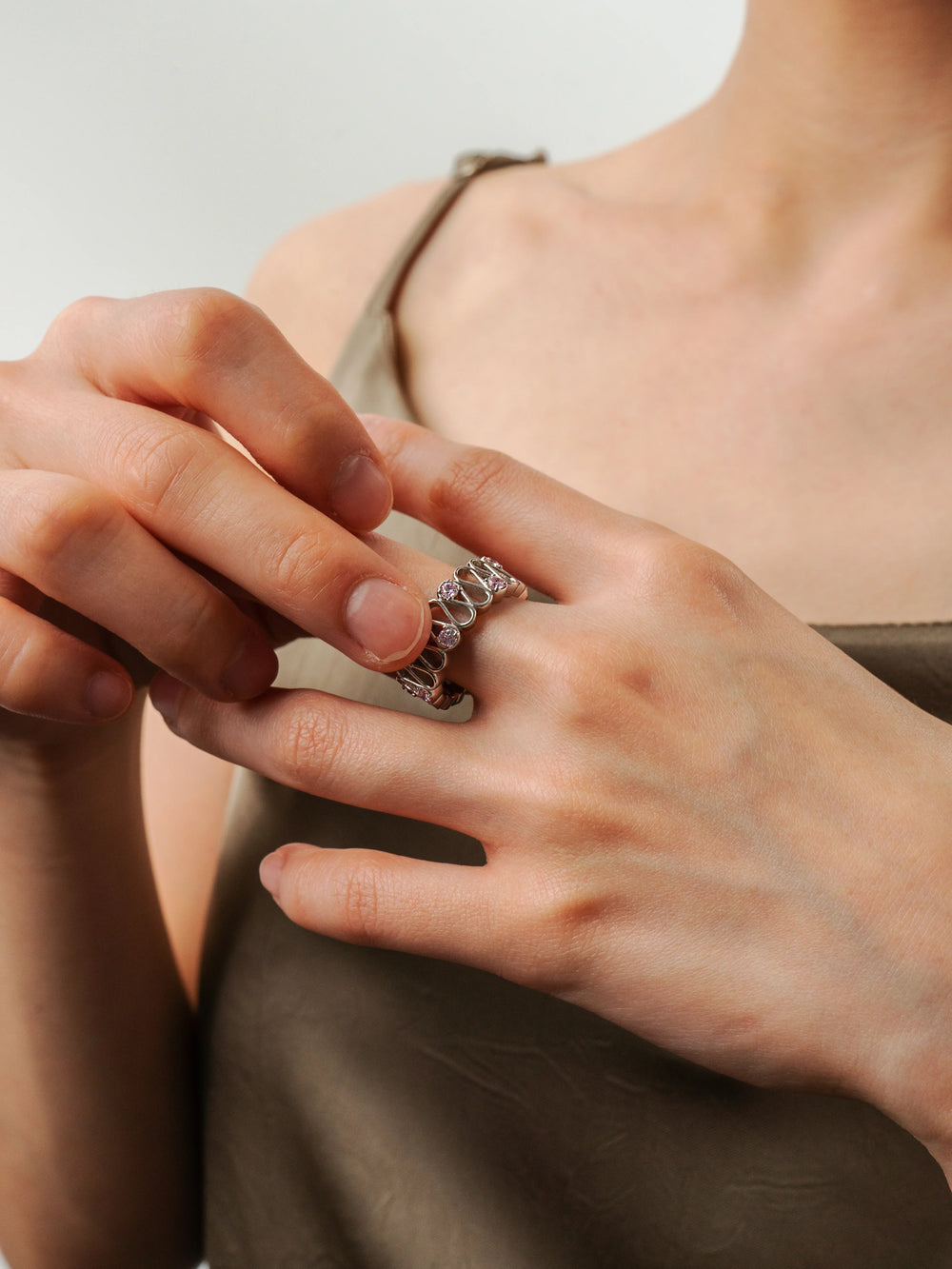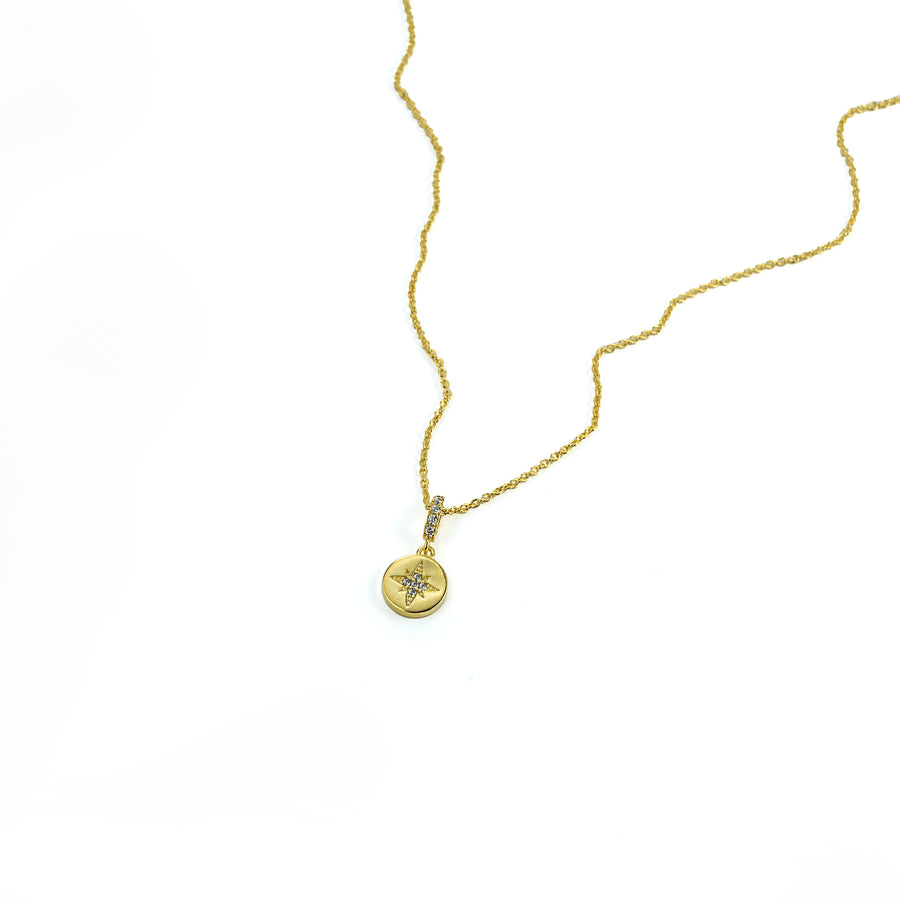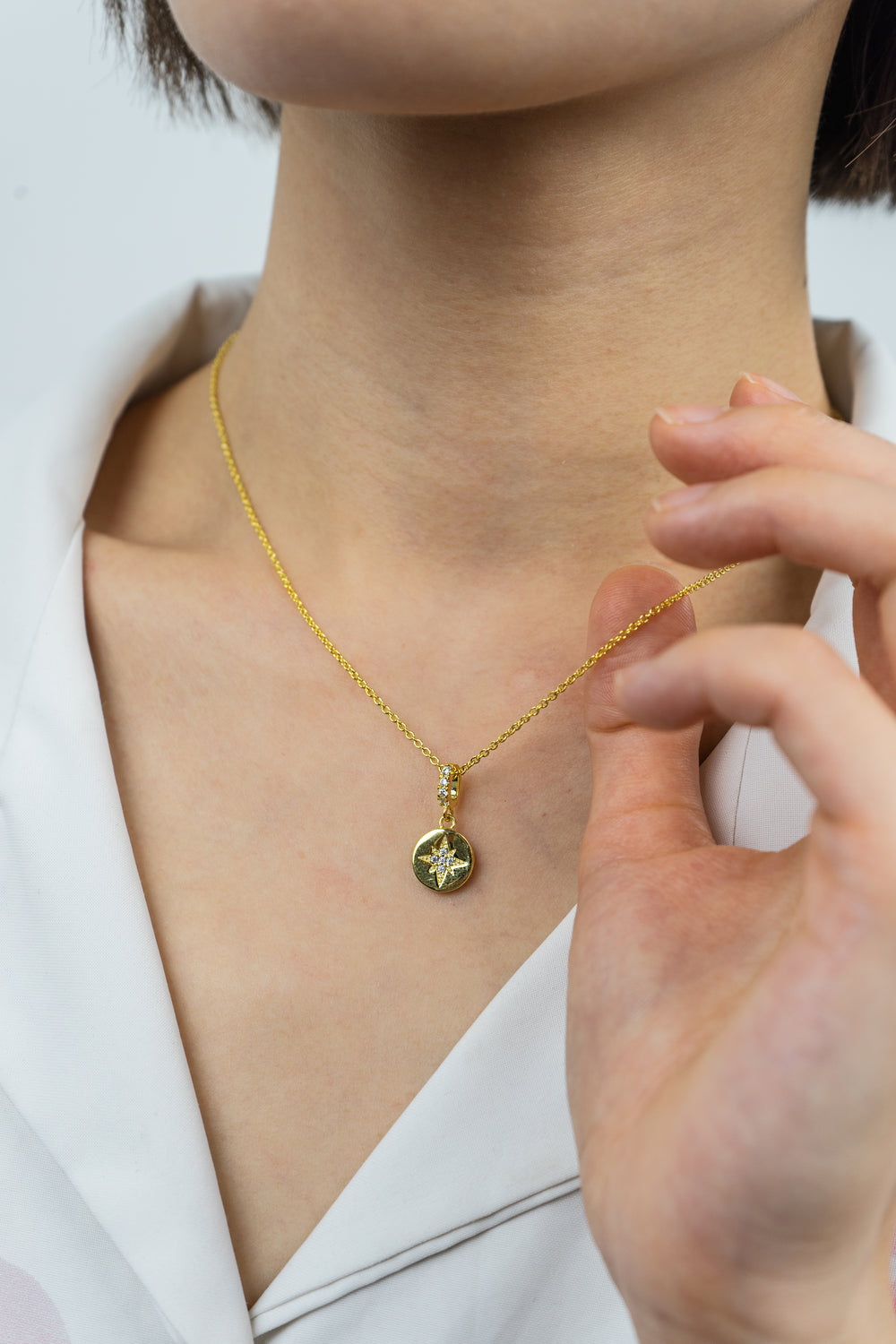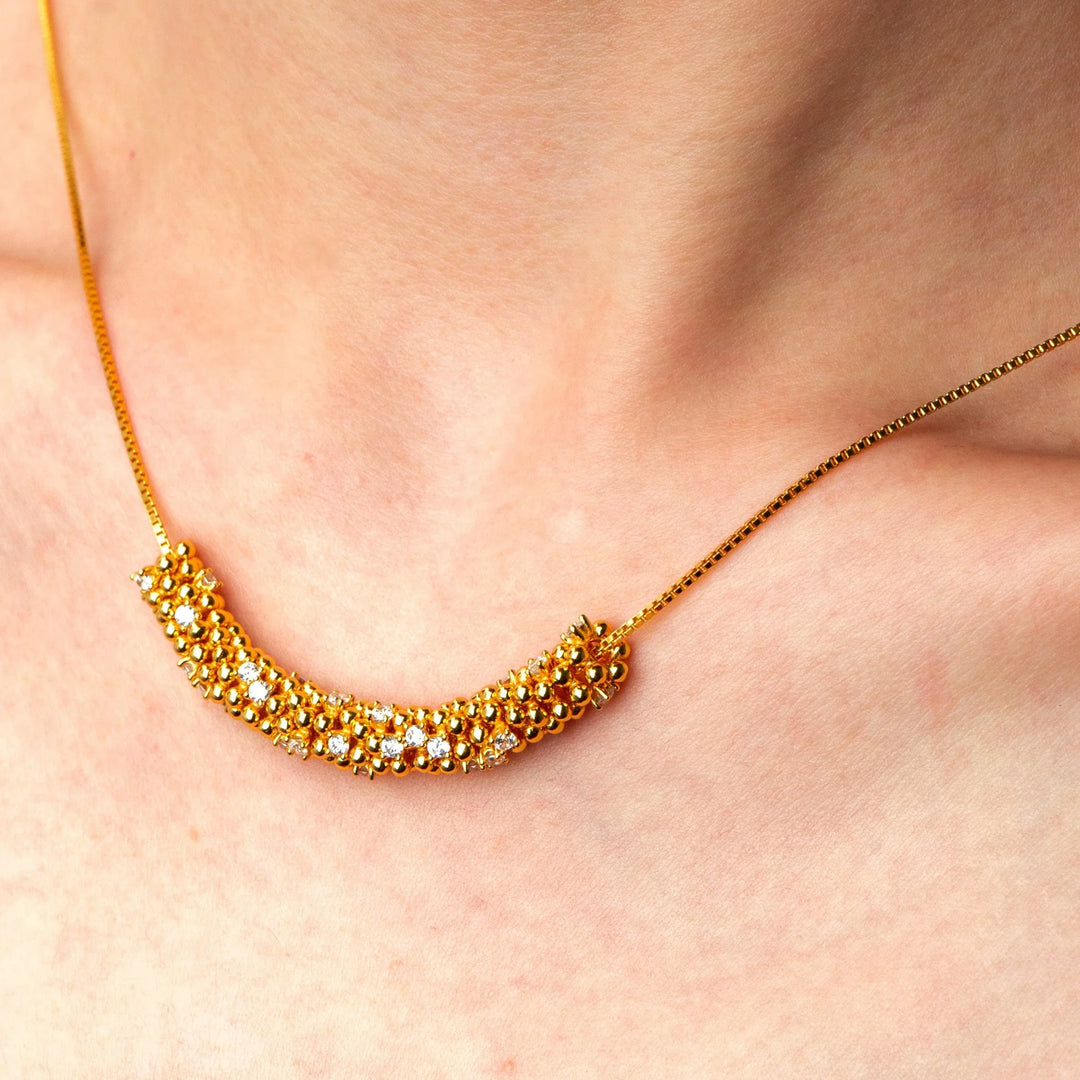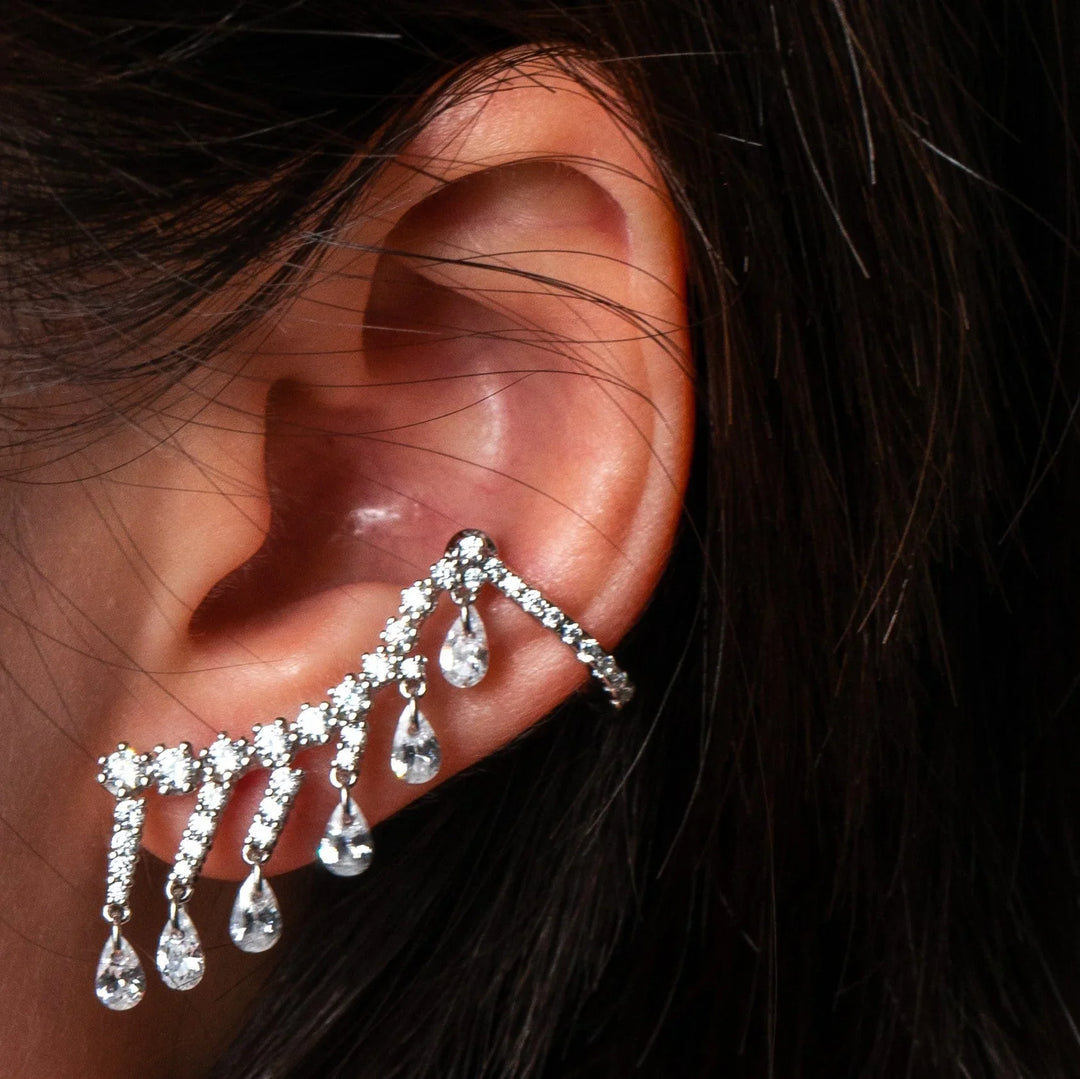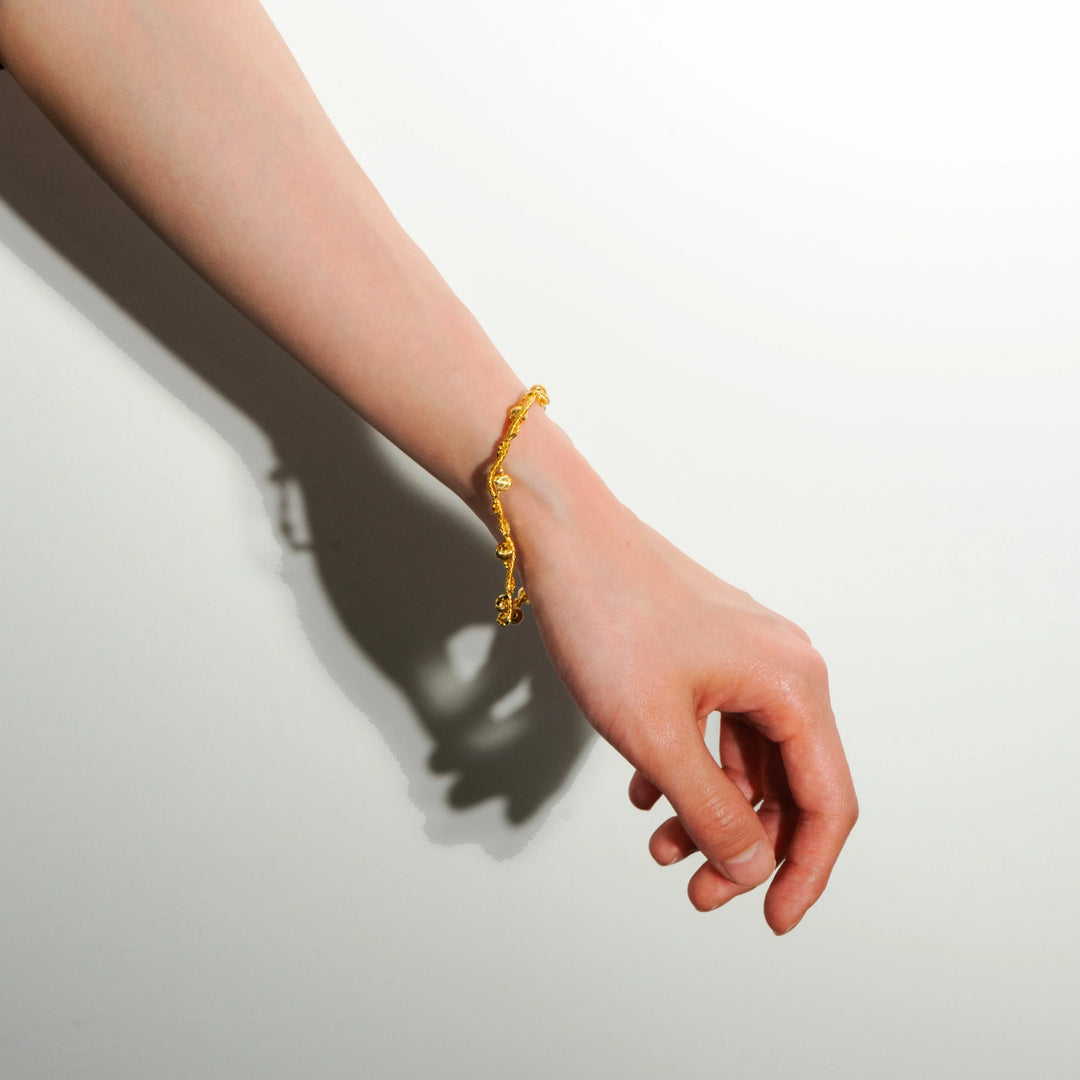Vintage & Antique Jewelry: Shopping Tips & Guide
Introduction
The world of vintage jewelry shopping is like stepping into a time capsule — each piece carries whispers of the past, craftsmanship from a different era, and stories that have survived generations. For those who seek more than just sparkle, vintage jewelry offers meaning, character, and a sense of connection to history.
In recent years, more people are rediscovering the allure of vintage and antique jewelry. These treasures reflect sustainable luxury — a mindful way to enjoy beauty without excess. Whether you’re drawn to an Edwardian diamond ring, an Art Deco bracelet, or a retro gold pendant, each design reveals something deeply personal. It’s not about perfection; it’s about authenticity, emotion, and timeless artistry.
At Be Fruitful Jewelry, we believe jewelry should carry both beauty and spirit. That’s why Vintage Jewelry Collection celebrates history and individuality — each piece reminding you that elegance doesn’t fade with time, it evolves.
This guide will help you explore the world of vintage and antique jewelry with confidence. From understanding the difference between eras to learning how to care for your collectible treasures, you’ll discover how to make every purchase meaningful and lasting.
Why Vintage Jewelry Holds Timeless Appeal
Vintage jewelry shopping is not just about finding something old — it’s about uncovering a story. Each vintage piece has lived a life before yours, carrying memories of love, celebrations, and artistry. That emotional depth is what modern, mass-produced jewelry often lacks.
Unlike fast fashion, vintage and antique jewelry represent a slower, more intentional kind of beauty. Every gemstone was set by hand, every detail crafted with patience. This connection to craftsmanship makes vintage jewelry irresistibly personal.
1. Sustainability Meets Soulful Design
More buyers are turning to vintage jewelry as part of the slow fashion movement. Choosing vintage means reducing waste, supporting ethical sourcing, and preserving craftsmanship from eras when jewelry was made to last. It’s not just a fashion choice — it’s a conscious lifestyle decision.
When you purchase a vintage ring or pendant, you’re embracing sustainability with elegance. Each piece already exists in the world, carrying value that doesn’t rely on new mining or production. That’s what makes vintage jewelry shopping both eco-friendly and emotionally rewarding.
2. A Reflection of Eras and Emotions
From Victorian romance to 1970s glamour, every vintage piece reflects the values and styles of its time. The geometric boldness of Art Deco, the fluid femininity of the 1950s, or the playful experimentation of the retro period — all tell stories through design. Wearing such a piece is like wearing art and history together.
For example, vintage gemstone jewelry often holds symbolic meaning: sapphires for loyalty, emeralds for rebirth, pearls for wisdom. These timeless stones still resonate with modern spirituality and self-expression.
(If you’re fascinated by gemstone meanings, explore our Gemstone Jewelry Guide to learn how color and energy connect with personality.)
3. Sentimental Value Over Trends
Modern jewelry trends come and go, but vintage jewelry never truly fades. Its charm lies in its uniqueness — no two pieces are ever the same. You’re not just buying jewelry; you’re inheriting a legacy.
That emotional depth makes it perfect for marking personal milestones, anniversaries, or self-gifting moments.
Vintage jewelry also blends beautifully with modern aesthetics. A delicate Edwardian locket can be layered with a sleek gold chain, or a bold retro ring can add a touch of confidence to minimalist outfits. It’s about mixing eras and creating a look that feels uniquely yours.
4. The Beauty of Imperfection
One of the most beautiful aspects of vintage and antique jewelry is its subtle imperfection — a tiny scratch, a softened edge, a hint of age. These marks are proof of life, not flaws. They remind us that real beauty endures, even with time’s gentle touch.
As a brand that values meaning and mindfulness, Be Fruitful Jewelry encourages you to embrace jewelry that tells a story — not just one that shines. Because every mark, every detail, and every sparkle holds a past, and now, it can become part of yours.
Understanding the Difference: Vintage vs. Antique vs. Retro
When beginning your vintage jewelry shopping journey, one of the first things you’ll encounter is the terminology. Many use vintage, antique, and retro interchangeably — but in the world of jewelry, they mean very different things. Understanding these distinctions will help you make smarter, more confident choices when investing in timeless treasures.
Whether you’re an experienced collector or a first-time buyer, these subtle differences are the key to identifying quality, authenticity, and value. Let’s explore each category and what makes it special.
1. Antique Jewelry: Over 100 Years of History
According to professional antique jewelry tips, any piece that’s more than 100 years old is considered antique. These are not merely ornaments — they are pieces of history.
Antique jewelry often features delicate hand engraving, intricate filigree work, and rare gemstones cut in old-world styles. The Victorian, Edwardian, and Georgian eras each produced distinctive aesthetics that continue to inspire modern designers.
- Victorian Jewelry (1837–1901): Romantic, floral, and often symbolic, featuring hearts, snakes (representing eternity), and seed pearls.
- Edwardian Jewelry (1901–1915): Light, lacy designs made from platinum and diamonds — a true reflection of refinement.
- Art Nouveau (1890–1910): Flowing organic motifs, enamel accents, and nature-inspired designs.
Owning an antique piece is like holding a fragment of history in your hand. It’s rare, soulful, and deeply personal. When purchasing, look for hallmarks, maker’s marks, and signs of craftsmanship that prove authenticity. Reputable sellers, including vintage-focused boutiques like Be Fruitful Jewelry, often provide certificates or provenance documentation to guarantee quality.
2. Vintage Jewelry: Character and Charm (20–99 Years Old)
The term vintage typically applies to pieces produced between the 1920s and 1990s. This category includes the sleek geometry of Art Deco, the femininity of Mid-Century Modern, and the bold flair of 1970s retro glam.
Vintage jewelry allows wearers to express individuality while embracing timeless design. From a glimmering sapphire brooch to a delicate gold pendant, every piece has lived a story before yours. And because it’s more accessible than antique jewelry, it’s a great place for new collectors to begin their journey.

For those who love colorful, personality-filled designs, explore the Gemstone Jewelry Collection — inspired by the same vibrant energy that defines vintage aesthetics.
3. Retro Jewelry: Bold, Expressive, and Collectible
Retro jewelry bridges the gap between vintage and modern — typically referring to designs from the 1940s through 1970s. These pieces are known for their exuberant colors, sculptural shapes, and confident personality.
This era celebrated Hollywood glamour, post-war optimism, and freedom of expression.
Gold was the star of the retro period, often paired with large synthetic gemstones and playful motifs like bows, ribbons, or starbursts. Think Marilyn Monroe’s iconic gold accessories or Elizabeth Taylor’s dramatic gemstone rings — retro jewelry was meant to be seen.

That’s why retro jewelry buying has become popular again in today’s fashion cycles. Designers and collectors alike are drawn to its joyful spirit and investment potential.
If you’re exploring retro-inspired pieces, our Statement Jewelry Collection captures the same energy — perfect for mixing vintage confidence with modern elegance.
4. Comparison Table: Antique vs. Vintage vs. Retro
| Category | Approx. Age | Key Materials | Design Style | Why Collect It |
| Antique Jewelry | 100+ years | Platinum, 18k gold, old-cut diamonds | Romantic, ornate, symbolic | Historical significance, craftsmanship |
| Vintage Jewelry | 20–99 years | 14k–18k gold, silver, gemstones | Art Deco, Mid-Century, bohemian | Wearable history, individuality |
| Retro Jewelry | 1940s–1970s | Yellow gold, colorful stones | Bold, Hollywood-inspired | Expressive style, collectible appeal |
5. Choosing What Speaks to You
While definitions are useful, the most important part of vintage jewelry shopping is emotion. Choose what resonates with your personal story.
Some collectors are drawn to the mystery of antique pieces — the idea that they once belonged to someone with their own memories. Others love the playfulness of retro jewelry, or the balanced elegance of mid-century design.
Whether you’re buying to wear, to collect, or to pass down as an heirloom, the right piece is the one that feels right.
As one of our readers once said:
“When I wear vintage jewelry, I feel like I’m continuing a story that began long before me.”
That’s the true beauty of collecting — it’s not about trends, but connection.
How to Start Your Vintage Jewelry Shopping Journey
Stepping into the world of vintage jewelry can feel like entering a treasure room filled with stories, sparkle, and soul. Whether you’re drawn by nostalgia, design, or investment value, every piece has its own heartbeat. This vintage jewelry buying guide is designed to help you make confident, inspired choices — blending emotion with expertise.
1. Begin With Your Personal Style
Before diving into the technical details, take a moment to understand what kind of jewelry truly resonates with you. Do you lean toward romantic antique pieces, vibrant retro designs, or minimalist mid-century shapes?
Spend time exploring your preferences through photos, magazines, or vintage markets.
When you know your taste, you’ll be better equipped to spot pieces that complement your wardrobe and personality — whether it’s a delicate Edwardian locket or a bold 1970s gold bangle.
For inspiration, browse Be Fruitful Jewelry’s Gold Jewelry Collection — timeless, radiant pieces designed for women who appreciate artistry and individuality.
2. Learn the Language of Vintage Jewelry
Understanding key terms helps you navigate your search with confidence. When reading product descriptions or talking to sellers, keep an eye out for the following details:
- Era or Period: Indicates when the piece was made (e.g., Art Deco, Retro).
- Materials: Platinum, 14k or 18k gold, silver, or mixed metals.
- Craftsmanship Clues: Hand engraving, old-cut stones, filigree, or milgrain edges.
- Hallmarks and Stamps: Signatures or purity marks that confirm authenticity.
- Condition: Some wear is expected — it’s part of the charm — but look for structural integrity.
A trustworthy seller should always provide transparent information and clear photographs. If you’re shopping online, reputable stores like Be Fruitful Jewelry focus on detailed product storytelling and clear craftsmanship notes to help you make informed choices.
3. Where to Buy: Trusted Sources Matter
In the world of collectible jewelry, authenticity is everything. While estate sales and antique fairs can offer amazing finds, they require an experienced eye. If you’re just starting, consider these reliable sources:
- Certified Vintage Jewelers: Offer verified authenticity and professional appraisals.
- Online Boutiques with Transparent Descriptions: Like Be Fruitful Jewelry, which highlights craftsmanship, materials, and design origins.
- Reputable Auction Houses: Great for one-of-a-kind pieces with provenance documentation.
Avoid impulse purchases from unverified sellers or listings without detailed photos. Remember — true vintage jewelry has character, but it should also show quality workmanship and responsible restoration.
4. Authenticity and Condition Checks
Every genuine vintage or antique piece will have small signs of age — slight patina, tiny scratches, or gentle wear. These aren’t flaws; they’re the jewelry’s fingerprint.
Still, it’s wise to check the following:
- Gemstone Security: Ensure stones are firmly set.
- Metal Wear: Look for even color and minimal thinning on bands or clasps.
- Repairs: Ask if the piece has been restored; professional restoration is acceptable if disclosed.
If possible, request certification or a professional appraisal. Be Fruitful Jewelry ensures every crafted piece meets high-quality standards, offering the same peace of mind collectors seek in verified vintage purchases.
5. Caring for Antique and Vintage Jewelry
Once you own a piece of history, care becomes essential. Proper antique jewelry care preserves its shine and structure for years to come.
Here are a few timeless tips:
- Avoid chemical exposure (perfume, lotion, cleaning agents).
- Store separately in soft pouches or lined boxes.
- Gently clean with a soft cloth — no ultrasonic cleaners for delicate settings.
- Schedule occasional professional maintenance for clasps and prongs.
For a deeper guide, visit our blog post:
👉 How to Care for Your Jewelry: Everyday to Heirloom Pieces
Proper care doesn’t just protect — it honors the artistry and history behind each jewel.
6. Building Your Collection Over Time
Collecting vintage jewelry is not about quantity — it’s about connection. Start with one or two pieces that speak to you. Over time, you’ll develop an instinct for what’s rare, well-crafted, and meaningful.
Many collectors begin with accessible items like vintage brooches, pendants, or gemstone rings before exploring more complex designs. Document your purchases, note the era and origin, and enjoy the process.
Consider mixing eras to create your own story — for example, pairing a vintage gold necklace with modern pearl earrings for effortless balance.
For more style ideas, explore Our Blog for curated insights on gemstone symbolism, pairing techniques, and jewelry history.
7. The Joy of Connection
Ultimately, vintage jewelry isn’t just about appearance — it’s about emotion. When you wear a piece that has lived before, you’re connecting with its past and adding your own story to it.
Each ring, necklace, or bracelet becomes a symbol of continuity — a link between eras, memories, and identities.
That’s why collectible jewelry continues to thrive in modern fashion: it allows us to wear meaning, beauty, and heritage all at once.
The Modern Appeal: Why Vintage Jewelry Never Goes Out of Style
Fashion evolves every season — yet vintage jewelry continues to shine through every trend cycle. Why? Because true beauty never ages.
From the elegance of Edwardian filigree to the bold geometry of Art Deco, these pieces remind us that jewelry is more than decoration — it’s identity, heritage, and artistry combined.
Whether you’re new to vintage jewelry shopping or an experienced collector, understanding its modern relevance helps you choose and wear pieces with meaning and confidence.
1. A Conscious Choice: Sustainability Meets Style
In an era where consumers value authenticity and sustainability, sustainable jewelry has become a key part of ethical fashion. Vintage and antique pieces naturally embody this principle — they’re recycled luxury, crafted long before fast fashion existed.
When you choose a pre-loved ring or necklace, you’re giving it a second life while reducing environmental impact. There’s no new mining, no excess production — just enduring beauty passed down through generations.
At Be Fruitful Jewelry, our philosophy aligns with this idea. Each collection celebrates craftsmanship and mindful consumption. For instance, our Pearl Jewelry Collection showcases timeless designs made to be worn and treasured for decades, echoing the same sustainable values vintage jewelry represents.
2. A Return to Authenticity
In the social media era, everyone wants jewelry that feels personal and real. That’s one reason retro jewelry buying has made such a comeback. Each vintage piece carries history — a unique patina, design detail, or engraving that makes it impossible to replicate.
Consumers today crave individuality, and vintage jewelry delivers that effortlessly. Whether styled with minimalist outfits or layered with modern chains, antique and retro pieces offer a distinctive charm that mass-produced accessories can’t match.
To explore the emotional connection behind personal jewelry, read our blog post:
👉 Couples Jewelry: Celebrate Connection and Meaning
3. Celebrity Influence and Pop Culture Revival
The revival of timeless jewelry fashion owes much to pop culture. From red carpet appearances to Instagram trends, vintage-inspired looks are everywhere.
Celebrities like Rihanna, Zendaya, and Harry Styles frequently pair antique jewelry with modern couture — proving that the old and new can coexist beautifully.
Social media platforms, especially Instagram, have fueled this resurgence. Hashtags like #vintagejewelry and #antiquejewelrytips attract millions of views, showcasing how people across generations reinterpret classic designs.
If you want to see how modern simplicity meets vintage elegance, visit our Minimalist Jewelry Guide — a perfect example of how timeless design translates into contemporary fashion.
4. Mixing Old With New: Styling Inspiration
Combining vintage jewelry with modern pieces creates a layered look that’s stylish, personal, and balanced. Here are a few antique jewelry tips for mastering the mix:
| Modern Element | Vintage Pairing | Styling Tip |
| Sleek gold chain | Edwardian pendant | Layer for a dimensional neckline |
| Minimalist pearl studs | 1960s cocktail ring | Balance elegance with boldness |
| Thin bangles | Art Deco bracelet | Stack metals for texture contrast |
| Modern hoops | Vintage brooch as hair clip | Add creativity and charm |
This balance lets you express individuality without sacrificing harmony. You can also reinterpret heirloom pieces — wear a vintage brooch as a pendant, or stack antique rings with minimalist bands for a story-rich look.
5. Emotional Value Over Market Value
While some collectors focus on investment, the true joy of vintage jewelry shopping lies in emotion. Every ring or necklace once marked a moment — a wedding, a gift, a milestone. Owning such a piece lets you continue its story.
This emotional depth resonates deeply with Be Fruitful Jewelry’s philosophy: that jewelry should be more than beautiful — it should be meaningful.
6. The Timeless Aesthetic
Vintage jewelry has a distinct artistry that transcends fashion cycles. The curves, engravings, and gemstone cuts were made to endure — not just to follow trends.
That’s why collectors often say: you don’t own vintage jewelry; you’re its temporary guardian.
Wearing such pieces adds depth and authenticity to any outfit, creating a look that’s sophisticated yet approachable — a reflection of your story.
7. A Reflection of Identity
Owning collectible jewelry isn’t only about fashion — it’s about identity. It allows you to carry a piece of history that aligns with your values: craftsmanship, sustainability, and individuality.
For those who believe jewelry should tell a story rather than just decorate, vintage jewelry shopping is a journey of self-expression.
Expert Antique Jewelry Tips: How to Spot Real Quality and Avoid Fakes
Buying vintage or antique jewelry can feel like treasure hunting — full of beauty, excitement, and meaning. But among genuine treasures, there are also imitations. Understanding how to identify authentic antique jewelry ensures your purchase becomes a lasting piece of history, not a short-lived regret.
Below are expert-backed antique jewelry tips to help you recognize quality craftsmanship, verify authenticity, and shop with confidence.
1. Examine Craftsmanship and Materials
One of the first signs of authenticity in vintage jewelry shopping is craftsmanship. Unlike mass-produced pieces, antique jewelry was meticulously handcrafted.
Look for:
- Smooth metalwork: Edges should feel refined, not sharp.
- Hand engraving: Slight asymmetry is often a positive sign — machine engraving is too perfect.
- Clasp and hinge design: Older styles like box clasps, C-clasps, or barrel clasps indicate genuine vintage construction.
Also, consider the materials. Platinum became popular during the Edwardian era, while yellow gold dominated the Victorian period. Many collectible jewelry pieces may feature natural pearls or old-cut diamonds — both of which differ from modern laser-cut stones.
2. Understand Hallmarks and Maker’s Marks
Genuine antique jewelry tips always emphasize checking for hallmarks — small stamps that identify metal purity, country of origin, or the maker.
Common hallmarks include:
- “750” or “18K” for 18-karat gold
- “925” for sterling silver
- A crown or anchor symbol for British-origin pieces
- Maker’s initials or logos, which can sometimes trace a specific artisan or jeweler
If the marks look too fresh or poorly engraved, it might be a reproduction.
Pro tip: use a jeweler’s loupe or magnifying glass to inspect hidden areas, like clasp backs or ring interiors, where genuine hallmarks are usually placed.
3. Ask for Provenance or Appraisal
Every genuine vintage jewelry investment tells a story — where it came from, who owned it, and how it survived time.
Ask the seller for:
- Provenance documents: Certificates or letters that show ownership history.
- Appraisal reports: Ideally, from a certified gemologist or antique jewelry expert.
These add emotional and financial value. In some cases, documentation can increase a piece’s price by up to 30%.
If you’re exploring heirloom-inspired jewelry, our Gemstone Jewelry Collection channels the same spirit of legacy — each gem carrying its own natural story, just like vintage treasures.
4. Red Flags When Buying Antique Jewelry
While retro jewelry buying can be rewarding, beware of common pitfalls:
| Warning Sign | What It May Indicate | What to Do |
| Too-perfect stones | Modern synthetic replacements | Ask for gem certification |
| Missing hallmarks | Possible reproduction | Request verification or testing |
| “Antique-style” description | Not actually antique | Confirm date of manufacture |
| Inconsistent wear patterns | Partially refurbished or altered | Check authenticity report |
Buying from trusted sources — whether jewelers, estate sales, or verified vintage dealers — reduces risk and ensures you’re investing in real craftsmanship.
5. Learn the Eras and Their Signatures
Understanding jewelry eras helps you identify design authenticity and appreciate aesthetic evolution.
| Era | Approx. Years | Key Features | Common Metals & Stones |
| Victorian | 1837–1901 | Romantic motifs, lockets, floral designs | Yellow gold, garnet, pearls |
| Edwardian | 1901–1915 | Lace-like filigree, feminine elegance | Platinum, diamonds, pearls |
| Art Deco | 1920s–1930s | Geometric symmetry, bold color contrasts | White gold, onyx, emerald |
| Retro | 1940s–1950s | Oversized glamour, ribbon designs | Rose gold, citrine, aquamarine |
Recognizing these details not only enhances your collecting knowledge but also connects you to the emotional and historical depth behind every piece.
6. Invest Smart: Balancing Beauty and Value
When it comes to vintage jewelry investment, beauty and authenticity go hand in hand. Prices fluctuate based on rarity, condition, brand, and materials.
Here’s how to make smart choices:
- Start small: Buy what you love before investing heavily.
- Focus on craftsmanship: Well-made, unsigned pieces can be just as valuable as branded ones.
- Document everything: Keep receipts, certificates, and cleaning records for future resale or insurance purposes.
To see how meaningful jewelry transcends trends, explore our story-driven collections such as Couples Jewelry, which embody emotion and timeless connection.
7. Caring for Antique Jewelry
Proper care ensures longevity and sparkle. Unlike modern pieces, antique jewelry requires gentle handling.
- Store pieces separately in soft fabric.
- Avoid ultrasonic cleaners — they can loosen old stone settings.
- Clean using mild soap and a soft brush only.
- Periodically check settings and clasps.
For an in-depth guide on keeping heirlooms beautiful, read our blog:
👉 Ultimate Sterling Silver Jewelry: How to Care & Style
Embrace the Past, Wear It Proudly
Each vintage piece carries whispers of another time — craftsmanship, love, artistry, and dreams.
Owning authentic antique jewelry connects you not just to fashion history, but to human stories that transcend time.
As Be Fruitful Jewelry reminds us: Every piece you wear tells a story — make sure it’s one worth retelling.
Vintage Jewelry Shopping Guide: Where to Buy, What to Look For, and How to Build Your Collection
Shopping for vintage jewelry is both a passion and a journey — it’s about discovering pieces that speak to your soul while honoring the beauty of the past. Whether you’re exploring a hidden antique shop or scrolling through online collections, knowing where and how to buy ensures every treasure you find holds true value and authenticity.
1. Where to Buy: Trusted Sources for True Vintage Finds
When it comes to vintage jewelry shopping, your source matters as much as the piece itself. Here are the most reliable places to find genuine treasures:
| Shopping Source | Best For | What to Check |
| Antique Stores | Curated, verified collections | Ask for appraisals & hallmarks |
| Estate Sales | Unique, personal heirlooms | Inspect condition carefully |
| Auctions | Rare, collectible jewelry | Set a budget and research beforehand |
| Online Boutiques | Convenience & variety | Verify seller reputation and return policy |
Buying directly from reputable jewelers — such as Be Fruitful Jewelry — ensures authenticity and quality.
2. Budgeting Smartly for Vintage Purchases
One of the most practical antique jewelry tips is to start with a budget. Vintage prices vary widely depending on age, materials, and craftsmanship.
Key budgeting insights:
- Victorian and Edwardian pieces tend to be more expensive due to intricate workmanship.
- Art Deco and Retro styles are often more affordable entry points.
- Factor in potential restoration costs for cleaning or resizing.
💡 Pro Tip: Always prioritize quality over quantity. It’s better to own one exceptional heirloom than several lower-grade reproductions.
3. How to Build a Meaningful Collection
Building your own collectible jewelry collection is a rewarding process. Start with what resonates emotionally — a locket, a ring, or a charm that connects with your story.
Here’s how to grow intentionally:
- Define your era: Choose a focus, such as Art Deco geometry or Victorian romance.
- Mix styles mindfully: Combine antique rings with modern minimalist chains.
- Track provenance: Keep a jewelry log for each piece — source, purchase date, and details.
- Preserve value: Maintain receipts and certificates for insurance or resale purposes.
At Be Fruitful Jewelry, we believe collections are personal archives of energy and emotion. Each piece, whether old or new, carries healing symbolism and individual spirit — values that also shape our Gemstone Jewelry Collection.
4. Styling Vintage Jewelry in the Modern Age
Pairing antique pieces with contemporary outfits keeps your look timeless yet expressive. Try these combinations:
| Modern Fashion Element | Vintage Accent | Styling Idea |
| Neutral knitwear | Edwardian brooch | Add elegance to a simple neckline |
| Silk blouse | Retro gold chain | Create layered sophistication |
| Minimalist dress | Victorian ring | Subtle drama through contrast |
| Linen set | Art Deco earrings | Infuse old glamour into relaxed chic |
For more styling inspiration, explore our related blogs:
- 👉 Pearl Jewelry Guide: Freshwater, Akoya & South Sea
- 👉 Resin & Acrylic Jewelry: Bold Colorful Fashion Accessories
These pieces demonstrate how vintage influences continue shaping modern jewelry aesthetics today.
5. The Emotional Side of Vintage Jewelry Shopping
Beyond trends and aesthetics, vintage jewelry shopping is deeply emotional.
You’re not just buying a necklace — you’re inheriting a story. Perhaps it once celebrated a love, marked a milestone, or symbolized hope during difficult times.
At Be Fruitful Jewelry, we see jewelry as a vessel of light and meaning — something that awakens warmth, memory, and spirit.
Our collections are designed to resonate with that feeling, blending modern craftsmanship with soulful design.
Discover pieces that carry both beauty and intention in our Couples Jewelry Collection — where emotional connection meets timeless design.
6. Caring for Your Vintage Collection
Preservation is key to maintaining the integrity and glow of your antique treasures.
To ensure your pieces stay radiant for generations:
- Store individually in lined boxes or soft pouches.
- Keep away from direct sunlight and humidity.
- Use non-abrasive cleaning methods.
- Have stones and settings checked annually by a jeweler.
For more expert advice, read our in-depth care article:
👉 Ultimate Sterling Silver Jewelry: How to Care & Style
7. Vintage Jewelry: A Legacy You Create
Every piece of vintage jewelry you collect becomes part of your personal legacy — a bridge between past artistry and future storytelling.
By curating with intention, you’re not just preserving history; you’re writing your own chapter in its journey.
Jewelry isn’t static — it evolves with each wearer. That’s what makes retro jewelry buying so meaningful: it transforms history into living art.
As Be Fruitful Jewelry beautifully puts it:
“Jewelry holds energy. When worn with love, it becomes a blessing that lives beyond time.”
✨ Final Reflection
Vintage and antique jewelry is more than a fashion choice — it’s a way to carry history, emotion, and artistry into the present.
At Be Fruitful Jewelry, we believe every vintage-inspired design tells a story — one of grace, resilience, and timeless beauty. Our creations are meant to remind you that elegance never fades; it evolves, just like you.
Celebrate the past.
Embrace the present.
Let your jewelry tell your story — and be fruitful. 🍃
References & Recommended Reading
For readers seeking verified, authoritative information on vintage and antique jewelry, here are trusted sources:
-
Vintage jewelry – Wikipedia — Overview of styles, eras, and characteristics.
-
Antique jewelry – Wikipedia — Historical classifications and identification methods.
-
Jewelry appraisal – Wikipedia — Understanding valuation and authentication.
-
Art Deco – Wikipedia — Influence on 20th-century jewelry design.
-
Victorian era – Wikipedia — Jewelry aesthetics and symbolism.
- The Beginner’s Guide to Collecting Vintage & Antique Jewellery
FAQs:
1. What’s the difference between vintage and antique jewelry?
Antique jewelry is generally over 100 years old, while vintage jewelry refers to pieces that are at least 20 years old but not necessarily antique.
2. How can I tell if vintage jewelry is authentic?
Look for hallmarks, craftsmanship details, and material quality. Buying from trusted jewelers or certified sellers ensures authenticity.
3. Is vintage jewelry a good investment?
Yes. High-quality collectible jewelry, especially from renowned eras or designers, often appreciates in value over time.
4. How should I care for antique jewelry?
Clean gently with a soft cloth, avoid harsh chemicals, and store pieces separately to prevent scratches or damage.
5. Where can I buy genuine vintage and antique jewelry?
You can explore curated collections like our Jewelry Collection featuring timeless, handpicked vintage-inspired designs.












